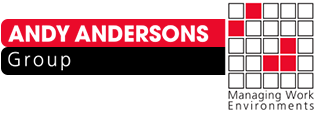-
admin@andyandersons.net.au
Send mail
-
Call Anytime (03) 9988 1228
-
Unit 2/44-48 Lock Ave,
Werribee VIC 3030, Australia -
- Welcome to our Andy Andersons Group!

In today’s fast-paced world, cleaning services have evolved to become more efficient and convenient than ever before. The debate between human touch and automated cleaning is at the forefront of this evolution. While both approaches have their merits, finding the right balance is essential to ensure a clean and healthy environment. In this blog post, we’ll explore the pros and cons of human touch and automated cleaning and discuss how Andy Andersons Group can integrate the best of both worlds to deliver top-notch cleaning services.
The Human Touch
Human touch in cleaning services is synonymous with traditional, manual cleaning methods. Here are some of its advantages:
- Attention to Detail: Human cleaners can identify and address specific areas that need extra care or unique attention, such as stains, spills, or delicate surfaces.
- Customization: Clients can communicate their unique cleaning preferences, and professional cleaners can adapt their methods accordingly.
- Flexibility: Human cleaners are capable of tackling various cleaning tasks, from deep cleaning to organizing personal belongings, based on client requests.
However, human touch cleaning has its share of limitations:
- Time-Consuming: Manual cleaning can be time-intensive, often requiring more hours to complete the same tasks that automated cleaning can do more quickly.
- Labor Costs: Hiring human cleaners can be more expensive due to labor costs, including wages, benefits, and training.
- Human Error: While human cleaners can pay close attention to detail, they may also make mistakes or overlook certain areas.

The Automated Advantage
Automated cleaning, on the other hand, is characterized by the use of technology and machines to perform cleaning tasks. Here are some benefits of automated cleaning:
- Efficiency: Automated cleaning equipment can clean large areas quickly, reducing the time required for cleaning tasks.
- Consistency: Machines perform tasks consistently, ensuring that the same standard of cleanliness is maintained throughout the cleaning process.
- Cost-Effective: While the initial investment in cleaning equipment may be significant, automated cleaning can lead to cost savings in the long run due to reduced labour expenses.
However, automated cleaning has its drawbacks:
- Lack of Customization: Automated machines often lack the ability to adapt to unique cleaning requirements or changing circumstances.
- Limited Problem-Solving: They may not address unexpected issues, such as a spilled drink or a broken item, as effectively as human cleaners.
Striking the Right Balance with Andy Andersons Group
The ideal solution is to strike a balance between human touch and automated cleaning. We can integrate both methods, offering the following advantages:
- Customization: Andy Andersons Group can use automated machines for routine tasks and reserve human touch for specific, personalized cleaning needs.
- Efficiency: Automated machines can handle large areas quickly, while human cleaners can focus on intricate tasks that require attention to detail.
- Consistency: The combination of technology and skilled human cleaners ensures that every job meets high-quality standards consistently.
- Flexibility: Clients can enjoy a tailored cleaning service that adapts to their unique needs.
Conclusion
In the debate between human touch and automated cleaning, the solution lies in finding the right balance. A professional cleaning company can provide the best of both worlds, ensuring that your space is not only efficiently cleaned but also customized to your specific requirements. For top-notch cleaning services that offer this balance, look no further than Andy Andersons Group. Contact us today to experience the perfect blend of human touch and automated cleaning technology, giving your space the care and cleanliness, it deserves.
Image Attribution/Citations: Image by Freepik
